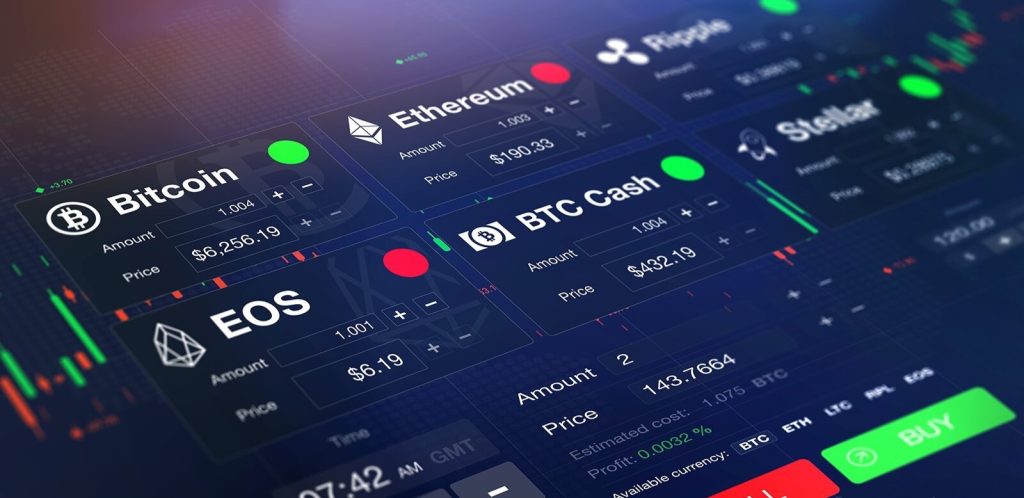In the fast-paced world of cryptocurrency trading, speed and precision are key. Among the various trading strategies, 30-second crypto trading has emerged as a high-intensity approach that appeals to traders who thrive on quick decision-making and rapid execution. This article delves into the fundamentals of 30-second crypto trading, exploring its benefits, strategies, tools, and risks, providing a comprehensive guide to mastering this dynamic trading method.
What is 30-Second Crypto Trading?
30-second crypto trading involves executing buy and sell orders for cryptocurrencies within a 30-second timeframe. This ultra-short-term trading strategy is designed for those who prefer to capitalize on fleeting market opportunities rather than holding positions for extended periods. The goal is to make small but frequent profits by taking advantage of brief price movements.
Key Benefits of 30-Second Crypto Trading

- High Potential Returns: Due to the rapid nature of trades, successful 30-second crypto traders can achieve substantial returns on their investments. Small price fluctuations can lead to significant gains when traded frequently.
- Market Efficiency: This strategy allows traders to react quickly to market news and trends, making the most of short-lived opportunities. By staying agile, traders can capitalize on moments of volatility.
- Increased Trading Opportunities: With the potential for multiple trades within a short period, traders have more opportunities to profit from market movements. This can lead to a higher overall trading volume and increased chances of success.
- Reduced Market Exposure: Holding positions for only 30 seconds limits exposure to market risks associated with longer-term trading. This can be advantageous in a volatile market where price swings can be unpredictable.
Strategies for Successful 30-Second Crypto Trading
- Utilize Technical Analysis: Given the short timeframe, technical analysis plays a crucial role in 30-second crypto trading. Traders often rely on indicators such as moving averages, Relative Strength Index (RSI), and Bollinger Bands to identify potential entry and exit points.
- Employ Scalping Techniques: Scalping involves making numerous trades to capture small price movements. For 30-second trading, scalping techniques can be particularly effective, as they focus on exploiting brief market inefficiencies.
- Leverage Real-Time Data: Access to real-time market data is essential for 30-second trading. Traders must monitor price charts, order books, and trade volumes to make informed decisions quickly.
- Set Tight Stop-Loss Orders: Given the rapid nature of trades, setting tight stop-loss orders helps manage risk and protect against significant losses. This ensures that trades are exited promptly if the market moves unfavorably.
- Automate Trading with Bots: Many 30-second traders use automated trading bots to execute trades based on predefined criteria. These bots can react instantly to market conditions, enhancing the efficiency of trading operations.
Tools and Platforms for 30-Second Crypto Trading
- High-Speed Trading Platforms: Choose trading platforms that offer low latency and high-speed execution. Platforms like Binance, Kraken, and Bitfinex are known for their advanced trading infrastructure and support for rapid trading strategies.
- Advanced Charting Software: Utilize charting software with real-time data and customizable indicators. Tools such as TradingView and MetaTrader 4/5 provide comprehensive charting features that are crucial for technical analysis in 30-second trading.
- Trading Bots and Algorithms: Automated trading bots, like those offered by 3Commas and Cryptohopper, can assist in executing trades within the 30-second timeframe. These bots use algorithms to analyze market data and execute trades on behalf of the user.
- API Integration: For traders who prefer custom solutions, integrating with cryptocurrency exchanges via API can offer greater control and flexibility. This allows for the creation of tailored trading strategies and automation of trading processes.
Risks and Challenges of 30-Second Crypto Trading
- High Volatility: Cryptocurrency markets are inherently volatile, and the 30-second timeframe magnifies this volatility. Rapid price fluctuations can lead to unexpected losses if trades are not managed effectively.
- Increased Transaction Costs: Frequent trading can result in higher transaction fees. It’s important to account for these costs when calculating potential profits.
- Emotional Stress: The fast-paced nature of 30-second trading can be mentally taxing. Traders must stay focused and avoid making impulsive decisions based on emotional reactions.
- Execution Risks: High-frequency trading requires precise execution. Delays or errors in order placement can result in missed opportunities or unintended losses.
Tips for Managing Risks in 30-Second Crypto Trading

- Develop a Solid Trading Plan: Establish clear trading rules and strategies before entering the market. Having a well-defined plan helps maintain discipline and reduces the likelihood of impulsive decisions.
- Use Risk Management Tools: Implement tools such as stop-loss orders and take-profit orders to manage risk and protect your capital.
- Continuously Monitor Performance: Regularly review and analyze your trading performance. This helps identify areas for improvement and adjust strategies as needed.
- Stay Informed: Keep up with market news and developments that could impact cryptocurrency prices. Staying informed allows for better decision-making and adaptation to changing market conditions.
30-second crypto trading offers a high-intensity approach to cryptocurrency trading, appealing to those who thrive on rapid decision-making and swift execution. By utilizing effective strategies, advanced tools, and robust risk management techniques, traders can capitalize on brief market opportunities and potentially achieve significant returns. However, the inherent risks and challenges require a disciplined approach and careful planning. Embrace the fast-paced world of 30-second crypto trading with confidence, and refine your skills to navigate the dynamic landscape of digital assets successfully.

